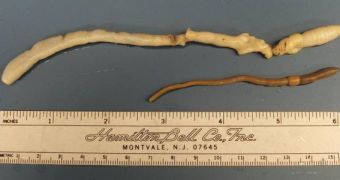Over the past few decades, sightings of the Palouse earthworm (Driloleirus americanus) were so rare, that when the first specimen was seen in 2005, after more than seven years, scientists were convinced that it had not been extinct. Upon hearing that an exemplary had been found, naturalists and ecologists rushed to the US Fish and Wildlife Service, and essentially begged officials to declare the species endangered. However, for reasons known only to them, the federal agency said it would have none of it, and added that there were insufficient pieces of evidence that the crawler was threatened.
Moreover, the agency officially shut down any investigation into the existence of the “lily-smelling American worm,” and moved on with its day. The reason it gave for its decision was a twist of Donald Rumsfeld's questionable expression “Absence of evidence is not evidence of absence.” Still, when an animal is found on average once per decade in the only habitat in the world it inhabits, common sense tells us that this is proof enough.
Now, with President Obama in office, environmentalists hope that their actions of classifying the Palouse earthworm as endangered will fall on more “receptive” ears. A petition making the same requests as those of 2005 was formally filed yesterday, July 1st, with the federal agency. As further evidence indicates that the worms are nearing extinction, scientists from several environmental groups and the nonprofit Center for Biological Diversity showed that its usual range had decreased to about two percent of its former size, Wired informs.
This mostly happened due to human expansion in the area. Natural grassland fields became non-annual crop fields, highways were built over the land, and grazing activities in the region increased considerably. In addition, imported earthworms, involuntarily brought from Europe, have created a vast network of tunnels under the land, taking over the territory of their American rivals. A reason for joy exists, however, as experts reported finding specimens further up North, demonstrating that the worms adapt to the changes in their habitats by moving away, just like most other species.

 14 DAY TRIAL //
14 DAY TRIAL //